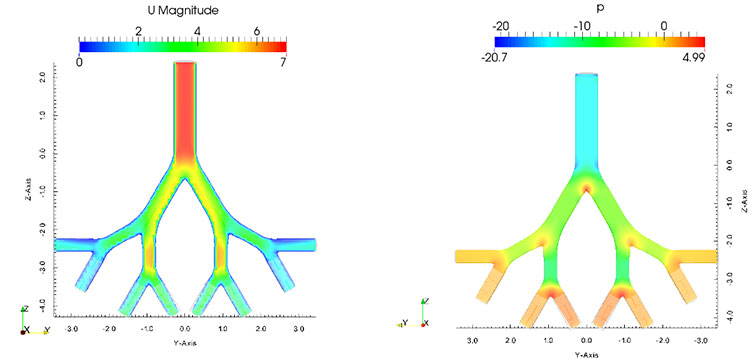Biofluid Mechanics
The great majority of HSE (Health Safety and Environment) departments in the chemical industry are also concerned withthe inhalation of solid particulate. Employees who work with powdery material, particularly in the inorganic chemicalfactories and polymers manufacturing sites are quite often exposed to some sort of hazard due to particulate handling.Additionally, many respiratory diseases are treated by the inhalation of drugs. For solid-fluid systems the inertial ofthe particle seems to play an important role in the deposition process. This is an important point in the design of drugswhich target a particular region of the respiratory system. The same principle also applies to droplets.The application of CFD (Computational Fluid Dynamics) techniques allows for the study of complex biological systems without requiring the use of in vivo experiments. This aspect of the research addresses the deposition of solid particulateat diferent generations of the upper respiratory system. It is focused on the understanding how in human body and its interaction with the mucous wall of the internal organs, such as the airways which provide access to the lungs.The research does not only rely on commercial tools but it also considers the application of open source codes andhow they compare with experimental data. The following figure presents computational results using OpenFoam for the first tests conducted.

Velocity and pressure contours up to three divisions of the conducting system of the human lung. Source: http://www.feq.unicamp.br/desq/l4r1s4/l4r1s4_pesquisa.html